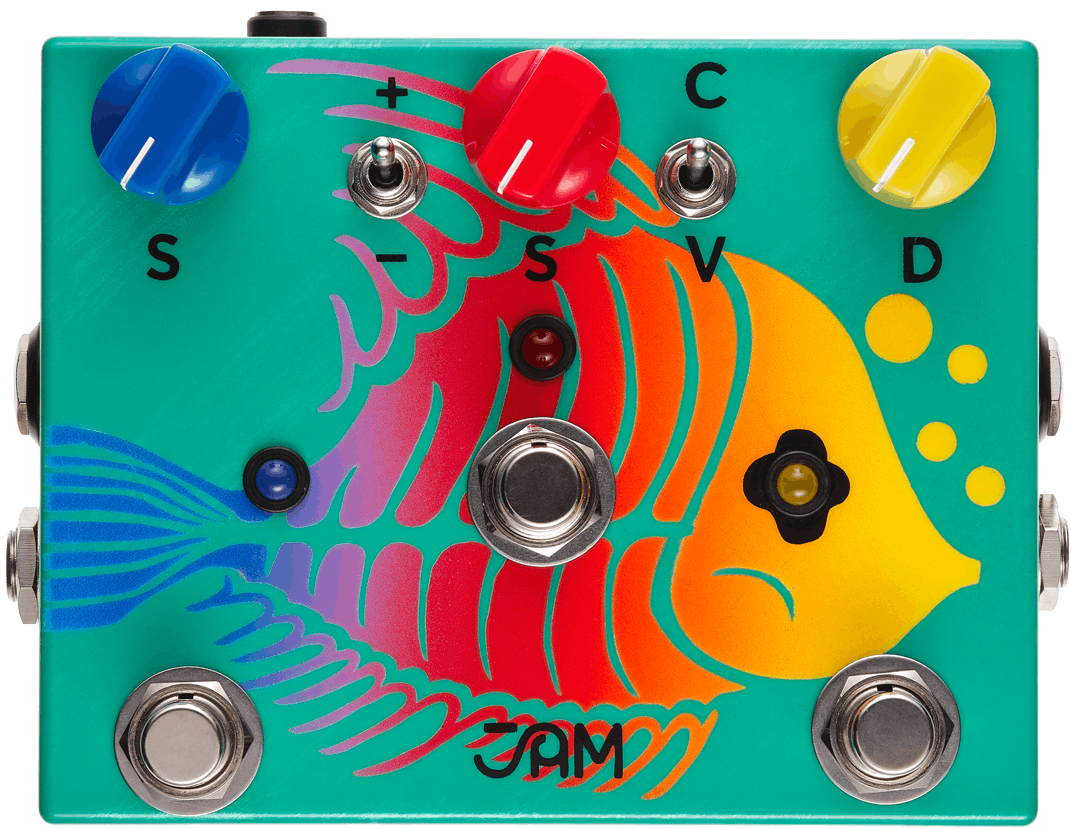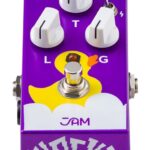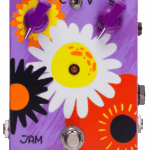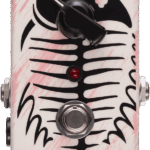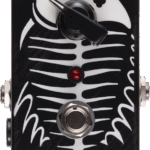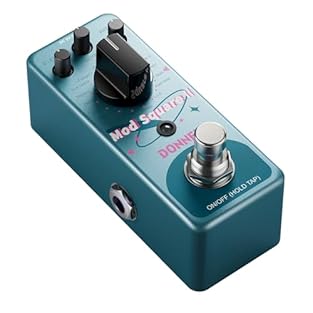Tasty Pedals made by JAM Pedals
JAM Pedals is a boutique guitar effects pedal company based in Greece, known for its hand-built, vintage-inspired designs.
Founded by George and Vicky Nikas in 2007, the company has earned a reputation for creating pedals that offer warm, analogue tones reminiscent of classic sounds from the ’60s and ’70s. JAM Pedals are distinctive for their artistic, hand-painted enclosures and meticulous craftsmanship.
The company’s product lineup includes a variety of effects such as fuzz, overdrive, delay, and modulation pedals, all of which are designed to provide rich, dynamic soundscapes. JAM Pedals are highly regarded by musicians for their unique combination of creativity, quality, and tonal authenticity.
Just Pedal Ingredients.
Pedal — Your pedal is like a signature dish for your sound — a flavour-packed creation that transforms the bland ingredients of your guitar into something unforgettable. Each one adds its own seasoning, texture, and heat, turning a simple meal into a feast of tone.
These tasty little boxes sit in a row, like plates on a buffet, letting you mix and match flavours as you play. With one tap of your foot, you can swap sweet for spicy, subtle for smoky, and serve up something completely new. From the comfort food of warm overdrive to the fiery kick of fuzz, from smooth jazz sauce to heavy-metal spice, pedals give players a full menu of options to express their taste. And just like with food — once you’ve tried one dish, you’ll want to sample them all.
Collecting, trading, and discovering new flavours soon becomes part of the joy of being a tone-loving gourmet geek with a guitar.. Pedals. Phaser — A phaser is a type of guitar effects pedal that creates a swirling, sweeping sound by modulating the phase of the audio signal. It works by splitting the incoming signal into two paths, shifting the phase of one path, and then recombining them. This creates peaks and troughs in the frequency spectrum, resulting in a distinctive, “phasing” effect characterized by moving notches in the frequency response.
Here’s how a phaser pedal typically works and some common features:
1. **Rate**: The rate control adjusts the speed at which the phase-shifting effect oscillates. Increasing the rate produces faster modulation, creating a more pronounced swirling effect, while decreasing the rate slows down the modulation for a smoother, more subtle effect.
2. **Depth**: The depth control adjusts the intensity or depth of the phase-shifting effect. Higher depth settings result in more pronounced peaks and troughs in the frequency response, while lower settings produce a more subtle modulation.
3. **Feedback (or Regeneration)**: Some phaser pedals feature a feedback control that determines the amount of modulated signal fed back into the effect. Increasing the feedback creates more pronounced peaks and troughs in the frequency spectrum, resulting in a more intense and resonant phasing effect.
4. **Stages**: Phasers typically have multiple stages (usually four, six, or eight), each of which contributes to the overall phase-shifting effect. More stages generally result in a more complex and textured phasing sound.
5. **Sweep (or Manual)**: The sweep control adjusts the center frequency of the phase-shifting effect. This allows you to focus the phasing effect on specific frequency ranges, altering the tonal character of the modulation.
6. **Resonance (or Feedback)**: Some phaser pedals feature a resonance control that emphasizes the peaks and troughs in the frequency response, creating a more pronounced and resonant effect. This control can add richness and depth to the phasing sound.
Phaser pedals are commonly used in various music genres, including rock, funk, and psychedelic music, to add movement, depth, and texture to guitar tones. They can be used to create swirling, swirling effects on rhythm parts, add dynamics to lead lines, or create atmospheric textures for ambient music. Overall, phaser pedals offer guitarists a versatile tool for shaping their tone and adding expressive modulation effects to their playing.. Vibrato — Vibrato is an effect commonly used in music, particularly in guitar playing, that involves modulating the pitch of a note to create a wavering or trembling sound. It adds a dynamic and expressive quality to the music, enhancing the richness and depth of individual notes or chords. Here’s how vibrato works and some common features of vibrato effects:
1. **Pitch Modulation**: Vibrato effect pedals modulate the pitch of the guitar signal, causing it to oscillate above and below the original pitch at a controlled rate and depth. This creates a shimmering or undulating effect similar to the natural vibrato produced by a vocalist or instrumentalist.
2. **Controls**: Vibrato pedals typically offer controls for adjusting the rate (speed) and depth (intensity) of the pitch modulation. The rate control determines how quickly the pitch oscillates, while the depth control determines the extent of the pitch modulation.
3. **Waveform Options**: Some vibrato pedals provide options for selecting different waveform shapes, such as sine wave, triangle wave, or square wave. Each waveform shape produces a different character of vibrato, ranging from smooth and subtle to choppy and pronounced.
4. **Expression Pedal Compatibility**: Many vibrato pedals are compatible with expression pedals, allowing players to control the rate or depth of the vibrato effect in real-time using their foot. This adds a dynamic and expressive element to the performance, allowing for greater control over the vibrato effect.
5. **True Bypass**: Like many other effects pedals, vibrato pedals may feature true bypass circuitry to ensure that the pedal does not color or degrade the guitar signal when it’s not in use. True bypass preserves the tone and integrity of the instrument’s sound when the pedal is bypassed.
6. **Blend Control**: Some vibrato pedals include a blend control that allows players to mix the wet (effected) and dry (unaffected) signals. This enables subtle blending of the vibrato effect with the original guitar signal, preserving clarity and definition while adding depth and texture.
7. **Vintage vs. Modern Voicing**: Vibrato pedals may offer different voicing options to emulate the characteristics of vintage vibrato effects or provide more modern and versatile tones. Vintage-style vibrato pedals often replicate the sound of classic amplifier vibrato circuits, while modern pedals may offer enhanced features and flexibility.
Overall, vibrato pedals are versatile tools for adding movement, texture, and expression to guitar tones. Whether used subtly to add warmth and depth to clean passages or dialed in for dramatic pitch modulation effects, vibrato pedals offer guitarists a wide range of creative possibilities for shaping their sound..

